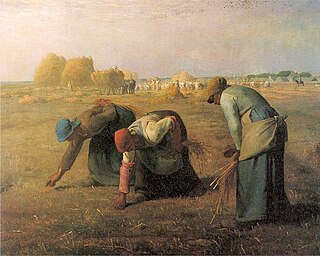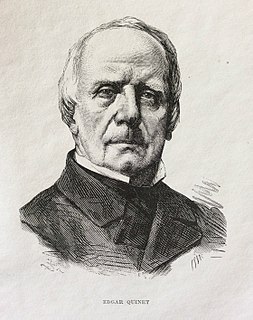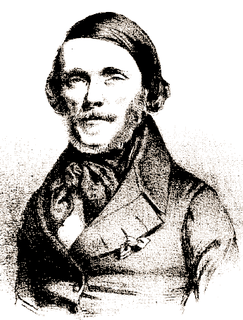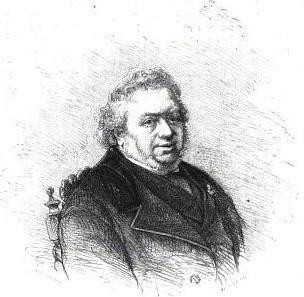- You may be looking for Louis Menand
Louis-Nicolas Ménard (19 October 1822 – 9 February 1901) was a French man of letters also known for his early discoveries on collodion. [1]

France, officially the French Republic, is a country whose territory consists of metropolitan France in Western Europe and several overseas regions and territories. The metropolitan area of France extends from the Mediterranean Sea to the English Channel and the North Sea, and from the Rhine to the Atlantic Ocean. It is bordered by Belgium, Luxembourg and Germany to the northeast, Switzerland and Italy to the east, and Andorra and Spain to the south. The overseas territories include French Guiana in South America and several islands in the Atlantic, Pacific and Indian oceans. The country's 18 integral regions span a combined area of 643,801 square kilometres (248,573 sq mi) and a total population of 67.3 million. France, a sovereign state, is a unitary semi-presidential republic with its capital in Paris, the country's largest city and main cultural and commercial centre. Other major urban areas include Lyon, Marseille, Toulouse, Bordeaux, Lille and Nice.
Collodion is a flammable, syrupy solution of pyroxylin in ether and alcohol. There are two basic types: flexible and non-flexible. The flexible type is often used as a surgical dressing or to hold dressings in place. When painted on the skin, collodion dries to form a flexible nitrocellulose film. While it is initially colorless, it discolors over time. Non-flexible collodion is often used in theatrical make-up.
He was born in Paris. His versatile genius occupied itself in turn with chemistry, poetry, painting and history. In 1843 he published, under the pseudonym of L. de Senneville, a translation of Prométhée délivré. Turning to chemistry, he discovered collodion in 1846, but its value was not recognized at the time; and its application later to surgery and photography brought him no advantage.

Paris is the capital and most populous city of France, with an area of 105 square kilometres and an official estimated population of 2,140,526 residents as of 1 January 2019. Since the 17th century, Paris has been one of Europe's major centres of finance, diplomacy, commerce, fashion, science, and the arts.
Chemistry is the scientific discipline involved with elements and compounds composed of atoms, molecules and ions: their composition, structure, properties, behavior and the changes they undergo during a reaction with other substances.

Poetry is a form of literature that uses aesthetic and rhythmic qualities of language—such as phonaesthetics, sound symbolism, and metre—to evoke meanings in addition to, or in place of, the prosaic ostensible meaning.
Ménard was a socialist, always in advance of the reform movements of his time. After 1848 he was condemned to imprisonment for his Prologue d'une révolution. He escaped to London, returning to Paris only in 1852. Until 1860 he occupied himself with classical studies, the fruits of which are to be seen in his Poèmes (1855), Polythéisme hellénique (1863), and two academic theses, De sacra poesi graecorum and La Morale avant les philosophes (1860).

London is the capital and largest city of both England and the United Kingdom. Standing on the River Thames in the south-east of England, at the head of its 50-mile (80 km) estuary leading to the North Sea, London has been a major settlement for two millennia. Londinium was founded by the Romans. The City of London, London's ancient core − an area of just 1.12 square miles (2.9 km2) and colloquially known as the Square Mile − retains boundaries that follow closely its medieval limits. The City of Westminster is also an Inner London borough holding city status. Greater London is governed by the Mayor of London and the London Assembly.
The next ten years Menard spent chiefly among the Barbizon artists, and he exhibited several pictures. He was in London at the time of the Paris Commune, and defended it with his pen. In 1887 he became professor at the École des Arts décoratifs, and in 1895 professor of universal history at the Hôtel de Ville in Paris. His Rêveries d'un paien mystique (1876), which contained sonnets, philosophical dialogues and some stories, was followed in 1896 by Poèmes et rêveries d'un paien mystique. Ménard died in Paris on 9 February 1901.

The Barbizon school of painters were part of an art movement towards Realism in art, which arose in the context of the dominant Romantic Movement of the time. The Barbizon school was active roughly from 1830 through 1870. It takes its name from the village of Barbizon, France, near the Forest of Fontainebleau, where many of the artists gathered. Some of the most prominent features of this school are its tonal qualities, color, loose brushwork, and softness of form.

The Paris Commune was a radical socialist and revolutionary government that ruled Paris from 18 March to 28 May 1871. The Franco-Prussian War had led to the capture of Emperor Napoleon III in September 1870, the collapse of the Second French Empire, and the beginning of the Third Republic. Because Paris was under siege for four months, the Third Republic moved its capital to Tours. A hotbed of working-class radicalism, Paris was primarily defended during this time by the often politicised and radical troops of the National Guard rather than regular Army troops. Paris surrendered to the Prussians on 28 January 1871, and in February Adolphe Thiers, the new chief executive of the French national government, signed an armistice with Prussia that disarmed the Army but not the National Guard.

The Hôtel de Ville in Paris, France, is the building housing the city's local administration, standing on the place de l'Hôtel-de-Ville in the 4th arrondissement. The south wing was originally constructed by François I beginning in 1535 until 1551. The north wing was built by Henry IV and Louis XIII between 1605 and 1628.It was burned by the Paris Commune, along with all the city archives that it contained, during the Commune's final days in May 1871. The outside was rebuilt following the original design, but larger, between 1874 and 1882, while the inside was considerably modified. It has been the headquarters of the municipality of Paris since 1357. It serves multiple functions, housing the local administration, the Mayor of Paris, and also serves as a venue for large receptions.
His works include: Histoire des anciens peuples de l'Orient (1882); Histoire des Israélites d'après l'exégèse biblique (1883), and Histoire des Grecs (1884-1886). There is an appreciation of Ménard in the opening chapter of Maurice Barrès's Voyage de Sparte.

Auguste-Maurice Barrès was a French novelist, journalist and politician. Spending some time in Italy, he became a figure in French literature with the release of his work The Cult of the Self in 1888. In politics, he was first elected to the Chamber of Deputies in 1889 as a Boulangist and would play a prominent political role for the rest of his life.

















